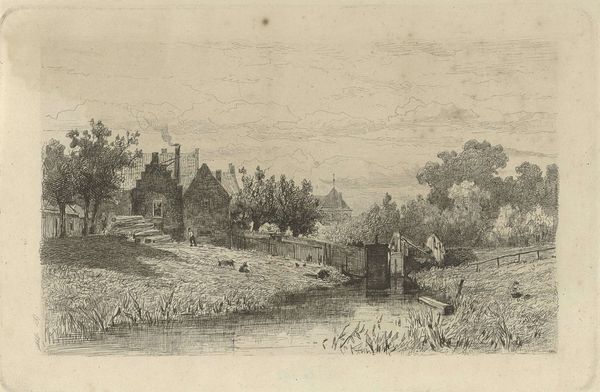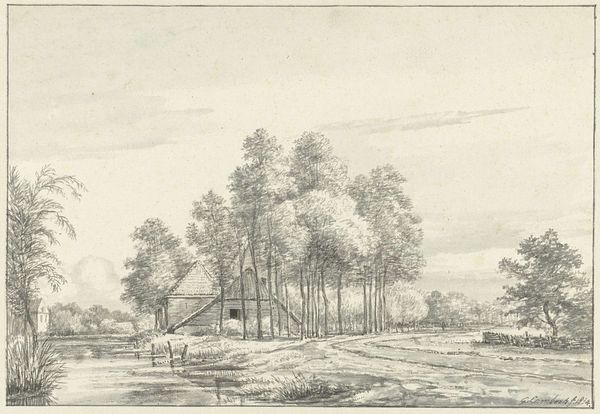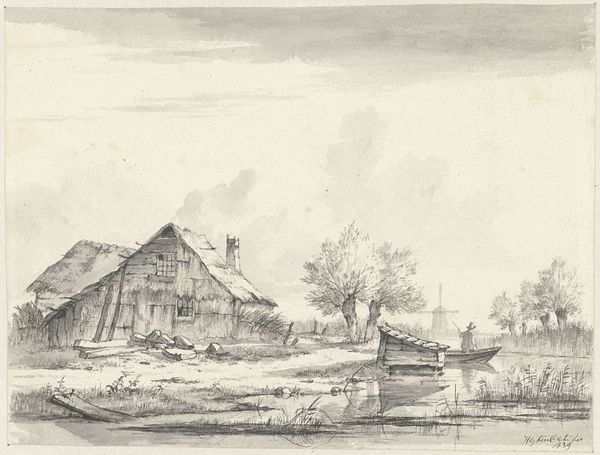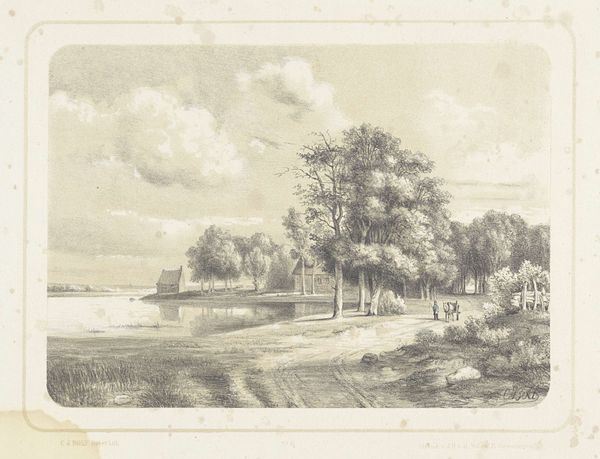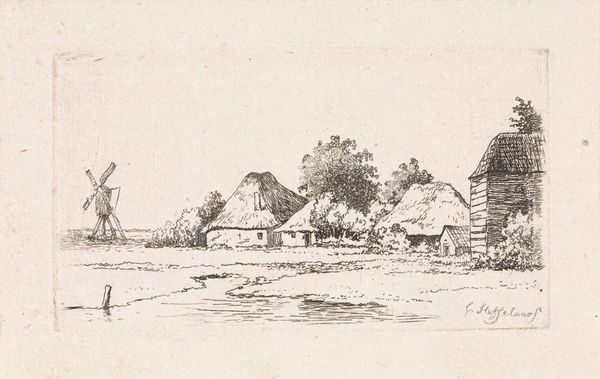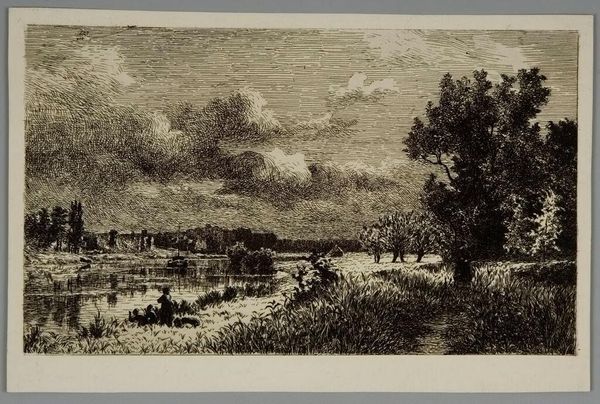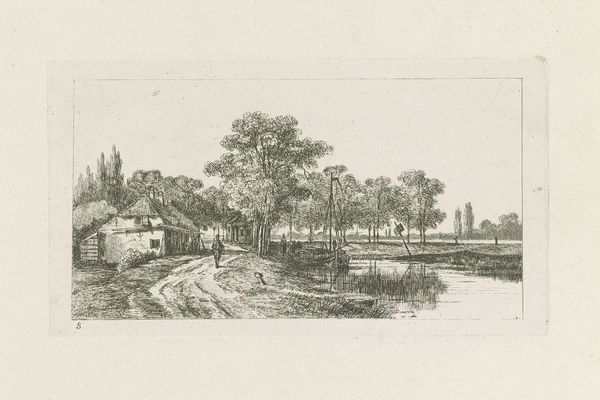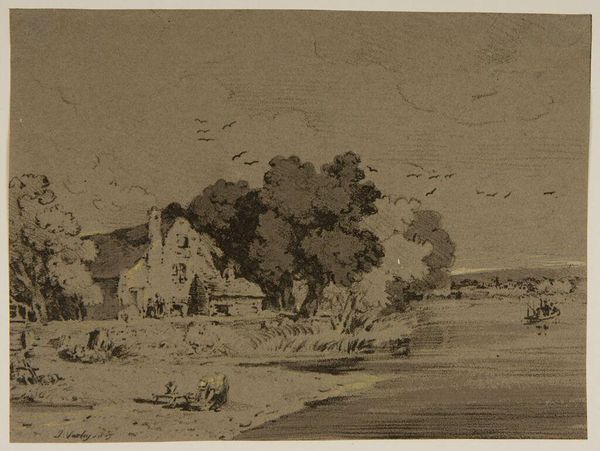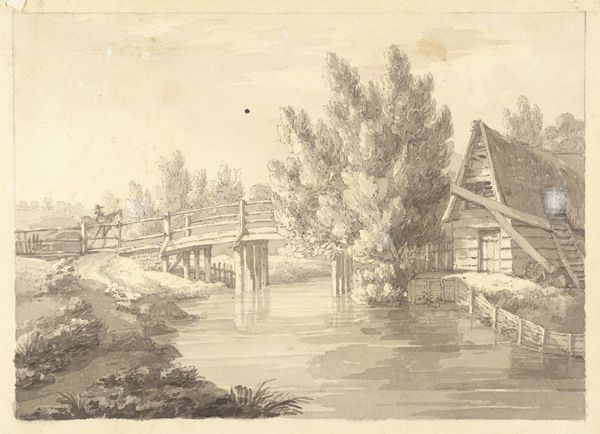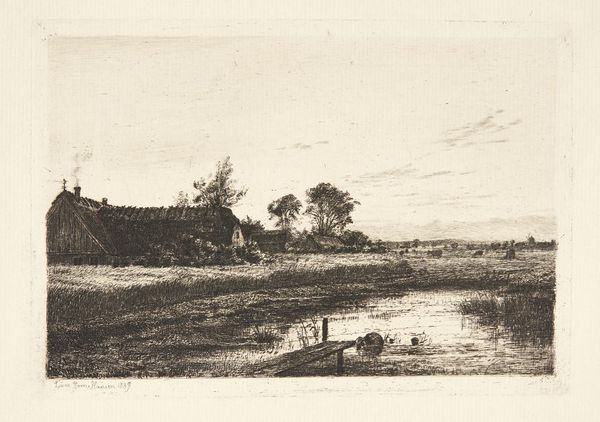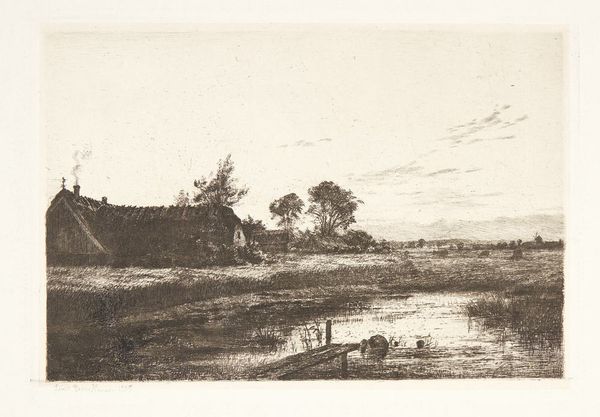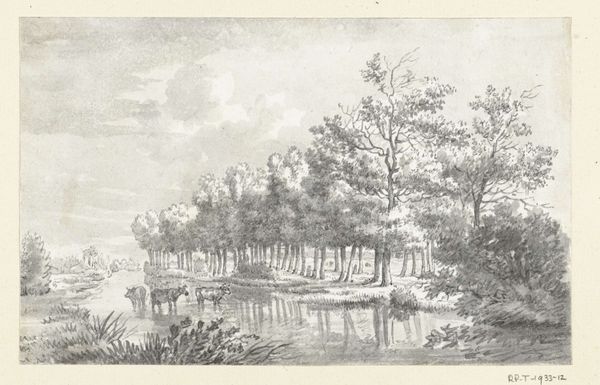
Lake Scene with Cottages (from Cropsey Album) 1820 - 1900
0:00
0:00
#
tree
#
amateur sketch
#
lake
#
natural shape and form
#
countryside
#
pencil sketch
#
incomplete sketchy
#
landscape
#
charcoal drawing
#
charcoal art
#
rough sketch
#
scenic spot
#
charcoal
Dimensions: 3 1/4 x 4 1/4 in. (8.3 x 10.8 cm)
Copyright: Public Domain
Editor: This is Thomas Addison Richards' "Lake Scene with Cottages" from the Cropsey Album, dating from somewhere between 1820 and 1900. It looks like a charcoal or pencil sketch. The overall impression is quiet and idyllic. What sort of stories do you see in this work? Curator: The idyllic nature you observe is certainly present, but it's worth digging a bit deeper into what "idyllic" might have signified at that time. Landscape imagery like this taps into deep cultural memories, often linked to a romanticized view of rural life. Consider how the watermill features, often symbolizing not just industry but a harmony with nature. How does this contrast with burgeoning industrialization in urban centers? Editor: So the cottages and mill aren't just quaint, they’re representing a way of life that might already have been fading when this was drawn? The artist could have been making a point. Curator: Exactly. The image of the sturdy tree also speaks to ideas of rootedness and permanence in an era defined by upheaval and change. Think about the symbolic weight of the natural world – does it represent an escape? A form of resistance? Editor: That makes me see the tree differently now. It seems like the tree, with its sturdy presence, and even the cottages could symbolize permanence in contrast to the swiftly changing landscape during industrialization. Curator: Precisely. And how might the medium itself – a sketch, quick, intimate – contribute to this reading? Perhaps, this wasn't meant for public consumption, but was instead an expression of something deeply personal? Editor: I see. The "roughness" almost suggests a nostalgic remembering rather than a formal statement. I never would have considered that this simple sketch might hold all that complexity. Thank you! Curator: And thank you, that’s why understanding symbolism enhances our understanding and connects the viewer to a broader, deeper conversation of cultural identity, history, and emotion.
Comments
No comments
Be the first to comment and join the conversation on the ultimate creative platform.
